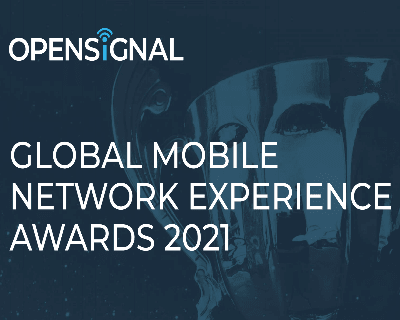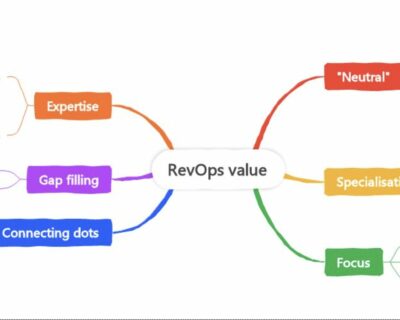As part of our Scale-Up Series, we hosted a lunch this week on the very real issues of KPIs, bonuses, share options and soft incentives in a fast-growing scale-up, and the role they play in determining organisational culture. Guests included CEOs, COOs, CFOs and Chairs from scale-ups with operations in the UK, France, Poland, US, Canada and China.
Arieso founder and Frog Partner, Shirin Dehghan, kicked us off with an initial set of themes to frame the session:
· Incentives and KPIs all cascade from your core business plan: The key company KPIs, such as revenue, gross margins, EBT, capex, product, geography and people, need to be created bottom-up by the executive leadership team. The Board should stress test the plan, but it MUST be owned wholeheartedly by the leadership team, not imposed by the Board or shareholders.
· The traditional annual model of objective setting and bonuses is not regular enough for a scale-up tech company.
· Objectives should be set and measured quarterly: Whilst a significant investment, everyone in the business should be and feel involved in the quarterly cadence of KPIs.
Sounds simple so far. So where are the issues? We first discussed how the sales team (B2B) and the customer acquisition team (B2C) are different. In short, these should be dealt with separately.
Motivating B2B Sales Teams
Revenue generators should be commission-based, and have clear annual targets broken down by quarter. A quarterly bonus should be placed on hitting individual quarter targets. There was much debate around how tough one can be on sales teams if they don’t hit their quarterly targets.
If sales people are missing targets, then it is likely to be one of the three following reasons:
1. the sales individual(s) or team lead is insufficiently trained or in the wrong job
2. the product is not good enough
3. there are insufficient customers in the market ready to buy.
Starting in the middle, if your product is not good enough, then you will be racking up deal losses. You need to go back to basics and analyse with a multi-functional team and market input where your feature gaps are, and how you are going to close them. If you are losing because of feature gap, you have a big problem. That means you are in a commodity market and the customer doesn’t see your company and product as anything special. War of features is a race to the bottom and many CEOs/boards fall into that trap. If you are insuch a situation take a step back and really think about how you can pivot and leapfrog your competition.
If you are creating a new market then you need very few but highly skilled consultative sales individuals who have the ability to really listen and understand the customer problem and position the product accordingly. These are special people who try to really understand the multiple blockages that are slowing down the sales cycle and work with back office teams to create solutions for each. These individuals are persistent but also patient. They sell more on a broader business case when creating new markets. Don’t forget people and organizations don’t like change and the only way they will is if they are forced to or if you show them a significant economic advantage.
Creating a market is one of the hardest tasks that any salesforce faces and you need the best if you are to succeed. In such markets you also need a very close closed loop between frontline and product development. Also just because you are creating a market doesn’t mean you should not hold your sales team to the highest standard. If you have hired the right sales individuals they will not use lack of customers as an excuse not to hit their numbers. They will relish the challenge of selling something new that is going to disrupt. This brings us to the first point. This is the number one reason most companies fail. Sales is the blood line of your company and you simply cannot afford non-performers. Those who are professional sales people know the three-strike rule, if they don’t they haven’t worked under serious leadership. If a sales person misses their quarter target three quarters in a row, they will not be there at the next company meeting delivering their excuses why dog ate their homework. As a CEO this is quite a tough way of running your sales team but conversely if you don’t do it, the company, shareholders and ultimately you will pay the price of non-performance.
Motivating B2C Customer Acquisition Teams
On the B2C side, the experience discussed was that the output goals can be logical but wrong for the business. If you set KPIs for the acquisition team to deliver app downloads, then don’t be surprised that the overall conversion to paying customers is poor. They didn’t focus on quality, they focused on what you asked for: app downloads. Whilst more painful, agreeing KPIs aligned with true company value (e.g. paying customers) will drive higher quality thinking in the team and ultimately more long-term customers.
Motivating Dev Teams
Are Technical team different? Clearly yes! First off, money. Are Dev teams motivated by money? ‘No, but yes’. Money is not the key driver, but they WILL leave you if offered a lot more money. So, you need to ensure you are paying close-ish to market if you can, and then invest like crazy into the softer elements. Do the easy stuff, football tables, pingpong, good coffee, free coke. Then think out of the box. Put pictures up on the wall of your customers. Make it personal for Dev people. ‘You’re working late to deliver a great service for Joanne at customer X’. And ensure the Dev team is celebrated as well as the Sales team when a deal comes home.
Each team in the business needs a different approach, but all need to be part of a regular, detailed quarterly rhythm. And toughest of all, the leadership team needs to develop a culture of success. Failure to hit your quarterly targets needs to be a big deal. If one of your senior directors is consistently over-optimistic and forgiven for it, the rest of the organisation will be watching. If the targets are reasonable, people need to be held accountable.
Which Are The Best Incentive Structures?
Bonuses
In terms of incentives, everyone agreed that every individual in the business needed to be bought into the vision, the leadership and what the company was about. If someone is not emotionally committed, then time is too short to keep luring them with money. They are just in the wrong place. Some companies tie quarterly KPIs to quarterly bonuses, arguing that the receipt (or absence) of a cheque each quarter is a surprisingly strong driver. Others keep to an annual bonus cycle. We agreed that it doesn’t matter as long as the approach is clearly communicated and people feel they are being treated fairly. Academic studies highlight that people are motivated by the basics: being set a challenge, achieving it and being recognised for it.
Share options
There were mixed opinions about share options. Some favoured very broad ownership so everyone gains on an ultimate exit. Other felt that many employees don’t appreciate the value so it is better invest in other more effective incentives. Some felt that a four-year vesting is a reality of the market, others felt that options are all about exit, and therefore should only be exercisable by people still with the business at exit. Everyone was in agreement that the system needs to be communicated clearly and regularly. If the exercise price is rising over time, then tell people. This is good news. Useful blog here on allocations.
Recognition and Equality
Peer group and sense of equality were agreed to be far bigger motivators than appreciated. Giving individuals better recognition is a simple and effective way to give people that extra buzz. Ideas included lunch with the CEO, monthly awards, team away days and nice dinners with their partner for major achievements. And arguably more importantly, be vigilant about inequality. People will care if they are paid less or receive lower option grants than someone they consider at the same level. If you’re trying to send a message of underperformance, do it in a direct, fair way so that they understand, otherwise this will impact culture negatively. Clearly this excludes option differences due to the date the individual joined the business.
Top 5 Lessons on Scale-Up Culture, KPIs and Incentives
We didn’t solve everything over one lunch, but Frog’s takeways for Scale-Up CEOs were as follows:
1. Do you and your senior team genuinely own the major company objectives? Have you done enough analysis to really commit and therefore suffer the consequences of failure?
2. Invest in a comprehensive quarterly objectives review process.
3. Get into the numbers of how the sales pipeline conversion has worked in the past so you can predict how it will work at individual and group level in the future. Then be tougher on setting and hitting targets once you’ve established that the product and market are engaging.
4. Invest in a range of non-financial communications, company vision and fun stuff. Do all-hand company meetings. Spend dedicated time with the team. Put maps up on the wall and show where your customers are. Celebrate successes across the business.
5. Whatever you decide on bonuses and options, it must be fully transparent so make it simple, logical and fair.
It was great to hear a full range of views. Frog specialises in supporting scale-up phase CEOs and their teams. Our Scale-Up Methodology helps CEOs gain clarity around issues like KPI and incentive structures. If you’re looking for scale-up investment from someone who brings insight as well as funding, get in touch.














